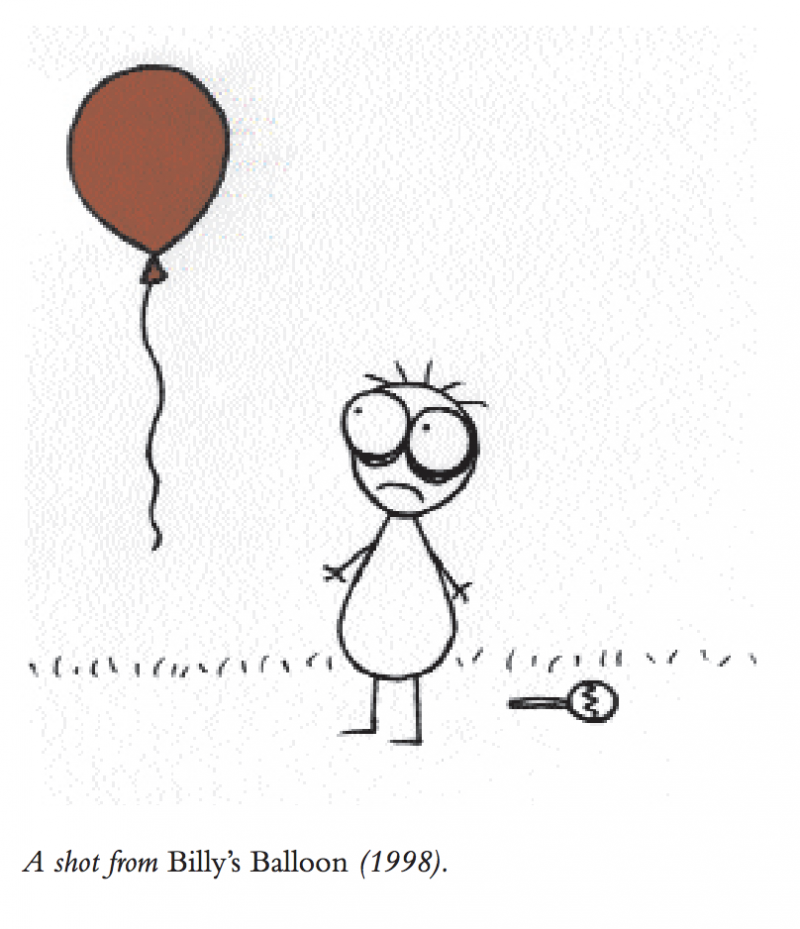Don Hertzfeldt tells stories with stick figures. He brings circles, lines, and dots to life with comedic timing and sadistic, existential emotions: balloons viciously attack children; a blob guy develops an unfortunate bleeding anus. But within the cartoon violence Hertzfeldt cultivates humanistic moments. Lily and Jim puts the melancholy of a blind date under a microscope. The Meaning of Life examines millions of years of evolution and ends with aliens trying to explain it all in their own language. The Academy Award–nominated Rejected lays bare Hertzfeldt’s anxiety about selling his soul to the commercial world—something he has never done.
Although he has help in some arenas, Hertzfeldt’s films truly reflect his own mind and hand. He writes, draws, and shoots everything with his 35 mm camera. No studio, no producers, no computers—he is an auteur of independent animation. Other than animating, he has never held a job, not even as a busboy.
In 2007, Hertzfeldt and Mike Judge launched their third traveling collection of animated shorts, aptly titled the Animation Show. An annual feature-length compilation—the only one run by animators—the festival provides a rare opportunity for new and old animated shorts to play in movie theaters around the world.
I interviewed Don in the Hungry Moose Lodge during the 2007 Sundance Film Festival, where his new film, Everything Will Be OK, won the Best Short Film award. Some follow-up questions took place over his home phone. Don doesn’t have a cell phone, but he just upgraded from dial-up to DSL.
—Mike Plante
 I. “I DON’T GET EXCITED BY FINDING A NEW WAY TO ANIMATE A FALLING LEAF.”
I. “I DON’T GET EXCITED BY FINDING A NEW WAY TO ANIMATE A FALLING LEAF.”
THE BELIEVER: I imagine your parents as hermits who make cabinets, but your dad was a pilot.
DON HERTZFELDT: Yeah, my dad’s a retired pilot and my mom’s a retired librarian. And they’re still together—totally normal.
BLVR: So you started drawing on your own?
DH: My brother and I drew like crazy. It’s hard to remember when or how it started. It was just always there. I had hundreds of drawing pads. We just filled them all in with comic books and really gory war stories. And I wouldn’t let my family or friends just read them; I insisted on showing it all to them. I’d turn the pages and I’d do all the voices and all the sound effects. I’d direct—point to this explosion and then this guy. I guess a primitive attempt to make it like a movie?
BLVR: Were you a fan of cartoons?
DH: I didn’t really read a lot of comic books when...
You have reached your article limit
Sign up for a digital subscription and continue reading all new issues, plus our entire archives, for just $1.50/month.
Already a subscriber? Sign in





